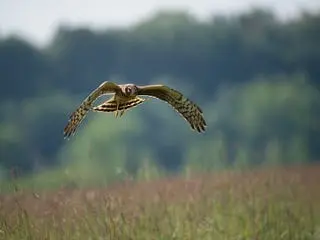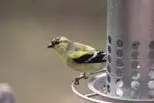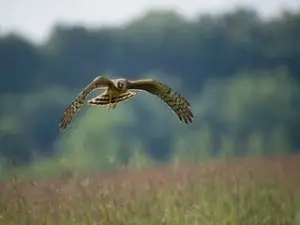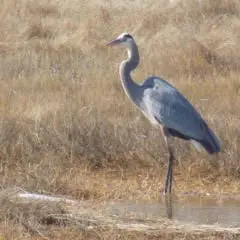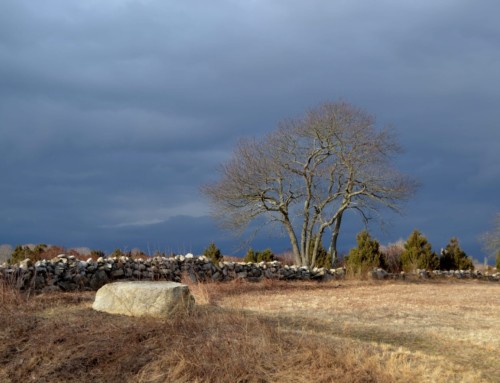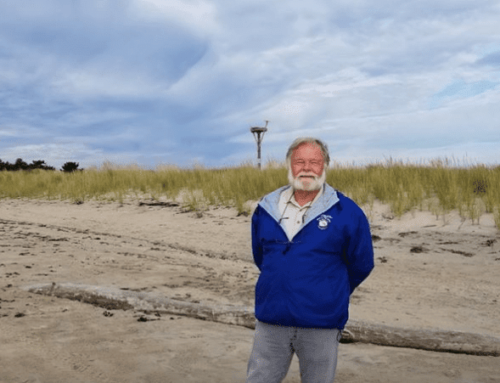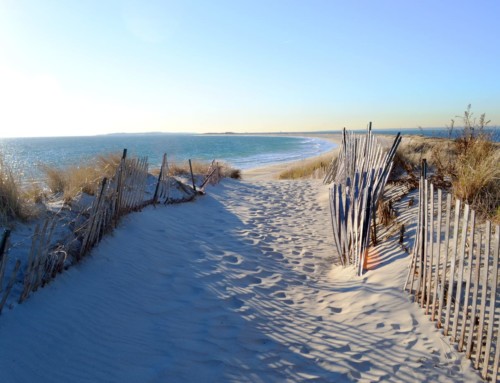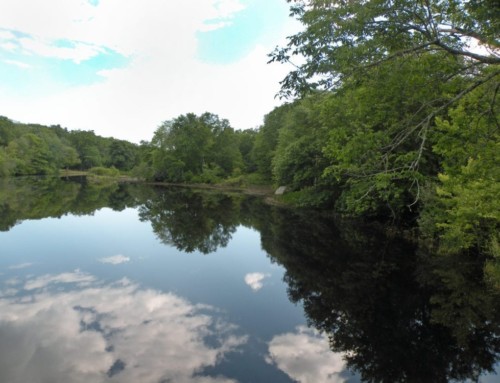“Everyone likes birds. What wild creature is more accessible to our eyes and ears, as close to us and everyone in the world, as universal as a bird?” -David Attenborough
A couple of weekends ago I took a day trip to Newport and ventured down past all three of the main beaches into Middletown. I ended up at Sachuest Point National Wildlife Refuge in Middletown and as I pulled into the crowded parking lot on a rather warm but windy March day, I saw a large group of people with camera lens extended upwards, all taking photos of this rather large white bird camped out on top of the nature centers roof.
I asked one of the parking attendants, (after driving around not being able to find a spot to park) what they were photographing, “oh that is our resident Snowy Owl, he has been hanging out here all winter.” And as I stopped the car to peer up I was mesmerized by how totally awesome it was that this rather rare sighting of such a beautiful bird was right here in broad daylight in our state, and how excited people get over photographing and seeing birds!
Now, while here in Westerly we might not have a Snowy Owl taking up resident near our beaches, we do have some pretty amazing avian species that call our little part of Rhody their home in spring and summer. Let’s explore some bird beauties.
If you have seen one sparrow in your backyard then you have seen them all right? Well, actually there are many different kinds of sparrows, as they pop up, fleet about and then disappear into the grasses. Sparrows that can be found here include American Tree, Chipping, Field, Vesper, Savannah, Song, Lincoln’s, Swamp, White-throated and White-crowned. These little cuties are frequent visitors at backyard bird feeders and also eat a lot of those pesky garden grubs and beetles.
During springtime, there are a lot of mating rituals going on with the male birds vying for the attention of the females. And you might have noticed more activity going on at your birdfeeder compared to the winter. Even with all the green starting to bud and bloom on trees and flowers, the availability of natural food for many bird species does not really peak until late summer and early fall, so it helps to keep the bird feeders full for our feathered friends. Some of the more common species you might see on any given day are Northern Cardinals, Blue Jays, American Goldfinch, Mourning Dove, Black-capped Chickadee, and maybe even the Downy Woodpecker.
Enjoy a leisure walk along the Avondale Farm Preserve and you will see a cornucopia of different bird species during migration in the spring as much fleeting about takes place looking for food and mates. The Avondale Farm preserve has become quite the birding destination and attracts several rarities, including Yellow-breasted Chat, Clay-colored Sparrow, Blue Grosbeak, Sedge Wren, Northern Shrike, Le Conte’s Sparrow and Dickcissel.
Rusty Blackbirds can occasionally be found, as well as a variety of raptors which hunt over the fields. Unlike most species of owls that hunt at night, hawks, falcons, and vultures hunt during the daytime. Northern Harriers are frequent visitors to the farm preserve as well as a variety of hawks such as Red-tailed, Red-shouldered, Cooper’s, Sharp-shinned, American Kestrels, and other raptors like the Merlin and Peregrine Falcons can be seen.
We have the best of both natural worlds here in Westerly with managed land preserves and the shoreline of Napatree and Misquamicut, where many beach birds make these sandy locales their year-round home. According to National Audubon.org Important Bird Areas Napatree Point/Sandy Point: Piping Plover return to the beaches of these two areas each spring to breed as do Least Terns, American Oystercatchers, and Common Terns.
By late July, shorebird migration has begun when large mixed species of Calidris sandpipers, Semipalmated and Black-bellied Plovers, yellowlegs, Ruddy Turnstones and other shorebirds, congregate to feed within the intertidal flats, wrack lines, and beach strand habitats. Large flocks of Common, Least, and Roseate Terns, as well as American Oystercatchers, collect in these areas as they stage for their southbound autumn migrations.
How amazing it feels to just by chance while out riding a bike along the marsh-lined roads to look out and catch a Great Blue Heron wading in the shallows. Its long neck extended – beak pointed at the water ready to catch its next meal. If your quiet enough and don’t make any sudden moves the heron will relax just long enough to stay a little while longer making it worth your while to be in its presence. As it takes flight, notice the six-foot wingspan on this blue beauty and how it just glides out over the marsh.
This spring and summer look to the skies for wings in flight, listen to the songs and melodies that fill the air, and appreciate all the bird beauty around us.
Get out and Bird! / Places to observe
The Westerly Land Trust
Birding events and locations
Westerlylandtrust.org / 401-315-2610
The Watch Hill Conservancy
Free guided nature walks every Sat (through Labor Day)
thewatchhillconservancy.org / 401-315-5399
Audubon Society of Rhode Island
Birding programs, sightings and events all over RI
asri.org / 401-949-5454
